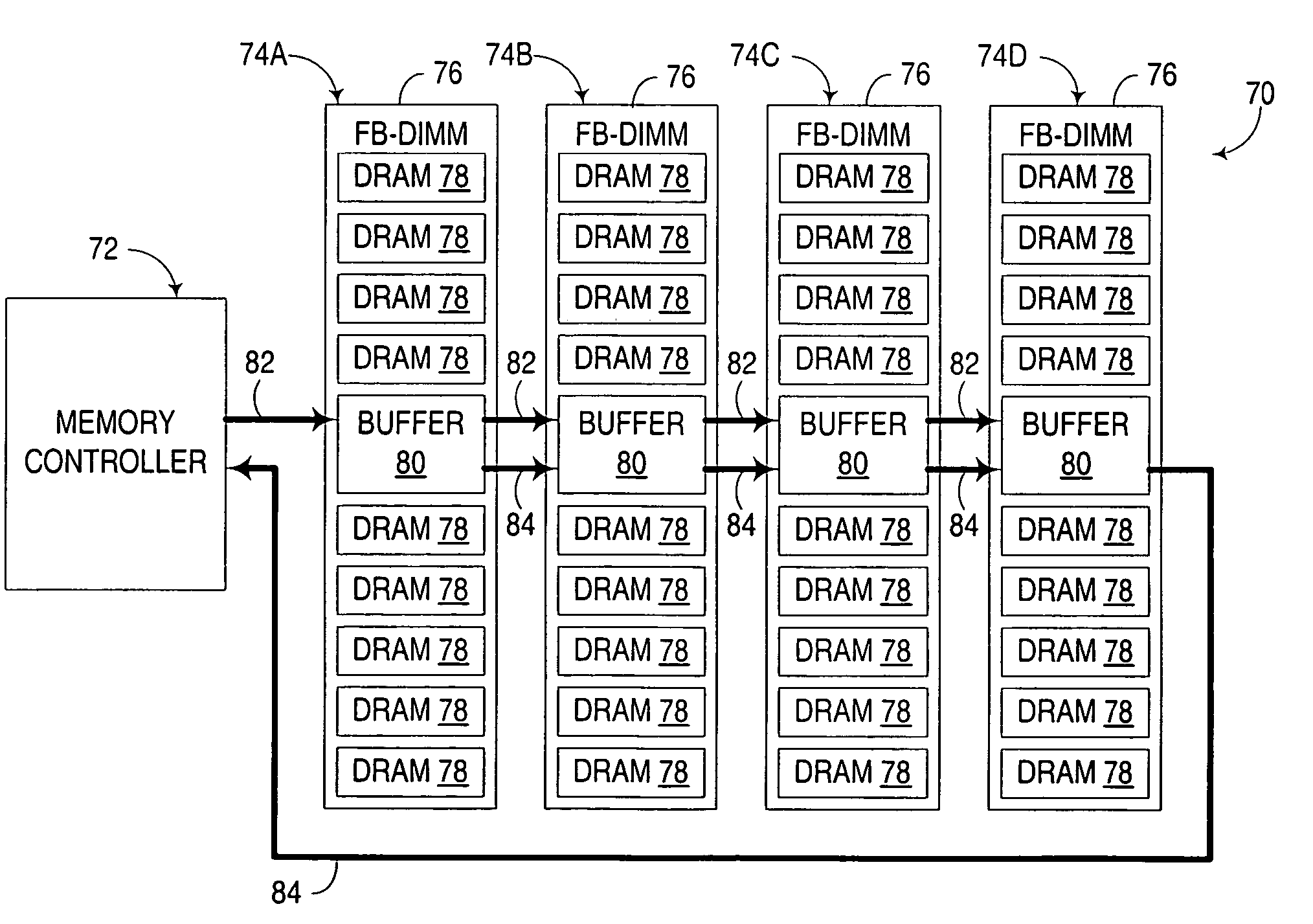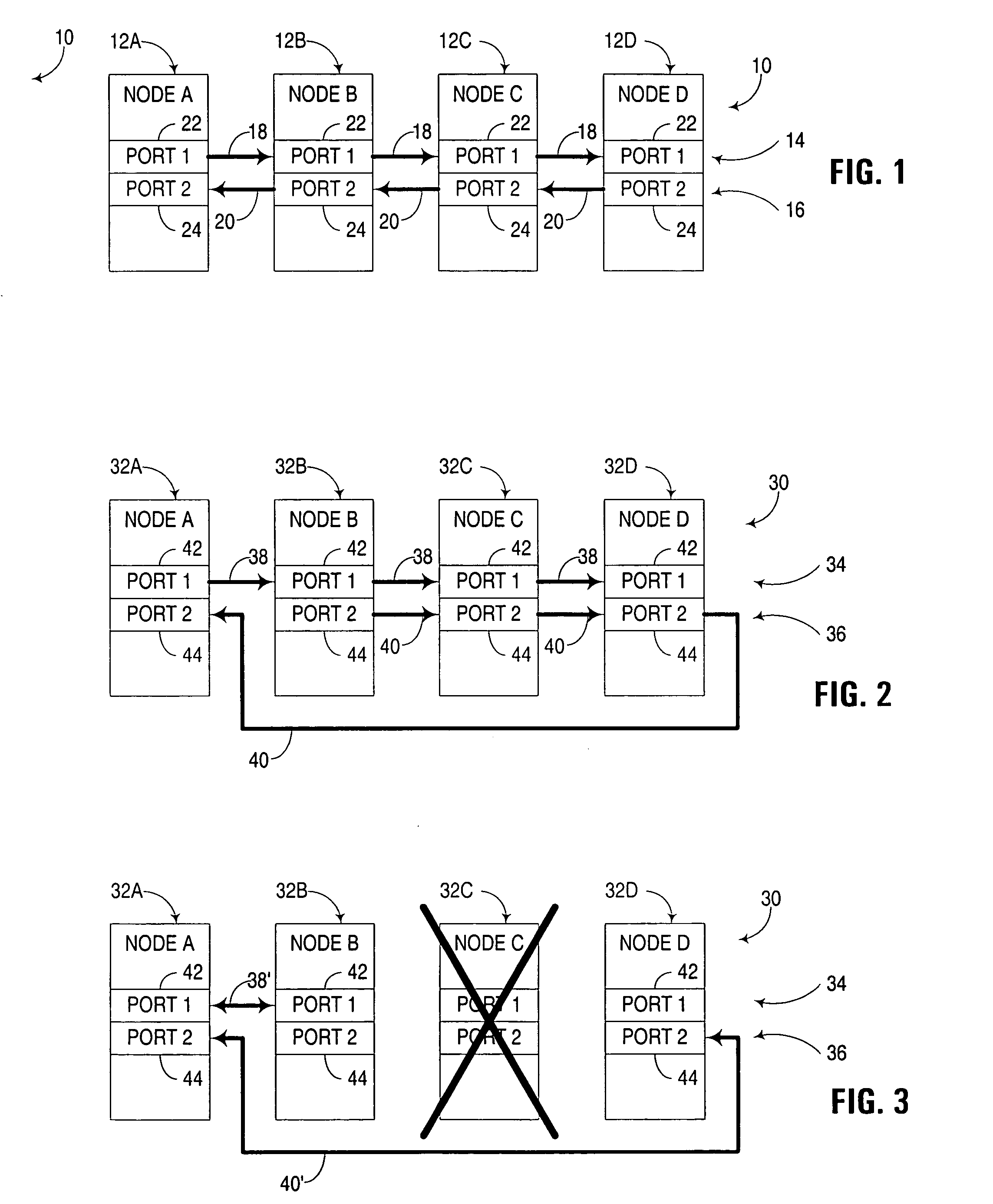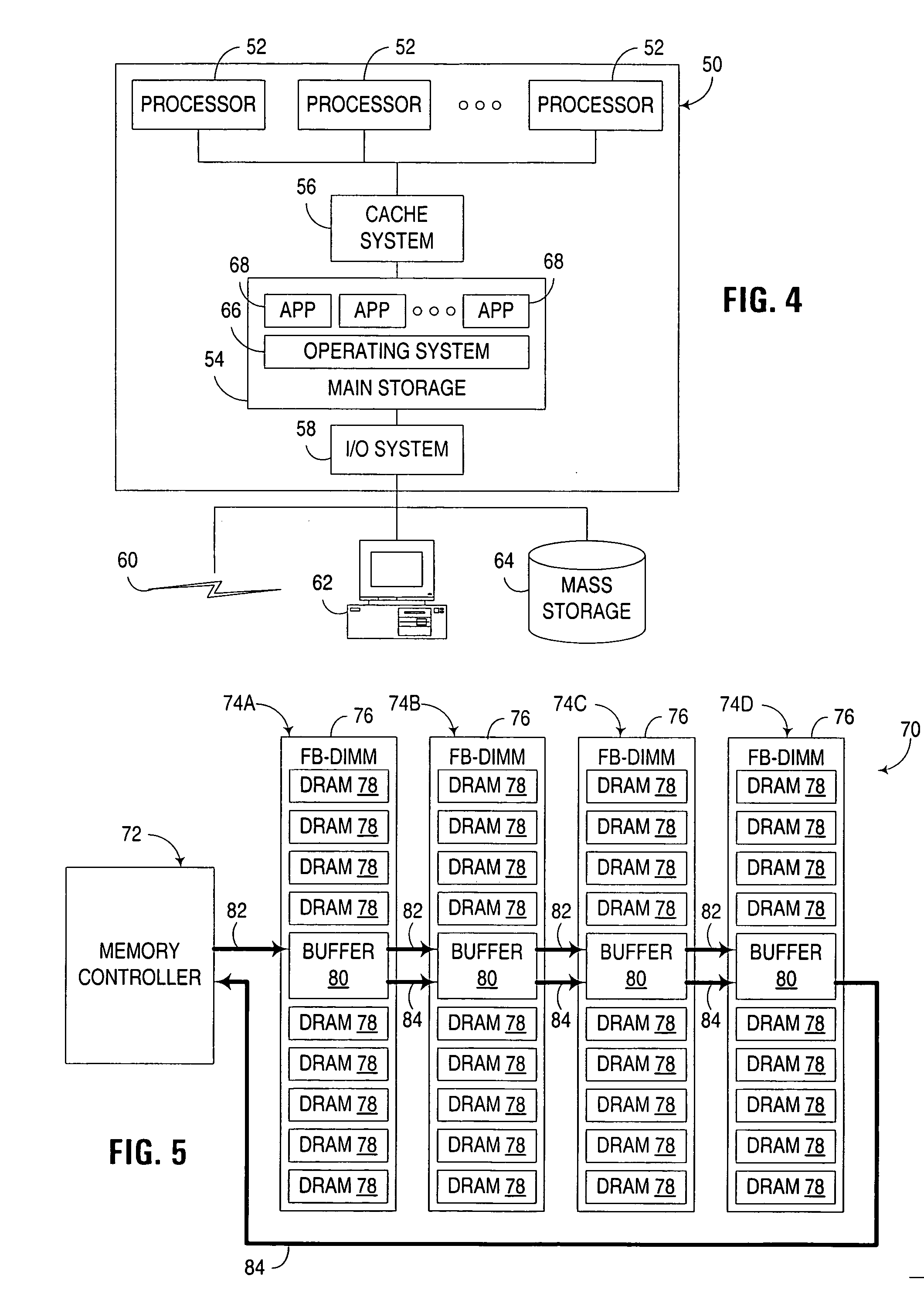Multi-node architecture with daisy chain communication link configurable to operate in unidirectional and bidirectional modes
a communication link and multi-node technology, applied in the field of multi-node architectures with daisy chain communication links, can solve the problems of limiting factors on the overall performance of the architecture, limiting the length of the interconnect, and unable to meet the requirements of the interconnection
- Summary
- Abstract
- Description
- Claims
- Application Information
AI Technical Summary
Benefits of technology
Problems solved by technology
Method used
Image
Examples
Embodiment Construction
[0028] The embodiments discussed and illustrated hereinafter utilize selectively configurable communication links to interconnect multiple nodes in a multi-node data processing system in which at least a portion of the nodes are arranged in a daisy chain configuration. In the context of the invention, a daisy chain configuration is a point-to-point configuration whereby multiple nodes are chained together via point-to-point interconnects between adjacent nodes (i.e., nodes that are immediately next to one another in a defined sequence of nodes), which is in contrast to a multi-drop bus architecture whereby a shared bus is used to communicate information to all nodes. Individual nodes in a daisy chain configuration are typically able to receive data from a communication link and automatically forward such data along the communication link to subsequent nodes in the configuration if such data is not intended for local consumption.
[0029] For example, as shown in the Drawings, wherein ...
PUM
 Login to View More
Login to View More Abstract
Description
Claims
Application Information
 Login to View More
Login to View More - R&D
- Intellectual Property
- Life Sciences
- Materials
- Tech Scout
- Unparalleled Data Quality
- Higher Quality Content
- 60% Fewer Hallucinations
Browse by: Latest US Patents, China's latest patents, Technical Efficacy Thesaurus, Application Domain, Technology Topic, Popular Technical Reports.
© 2025 PatSnap. All rights reserved.Legal|Privacy policy|Modern Slavery Act Transparency Statement|Sitemap|About US| Contact US: help@patsnap.com



